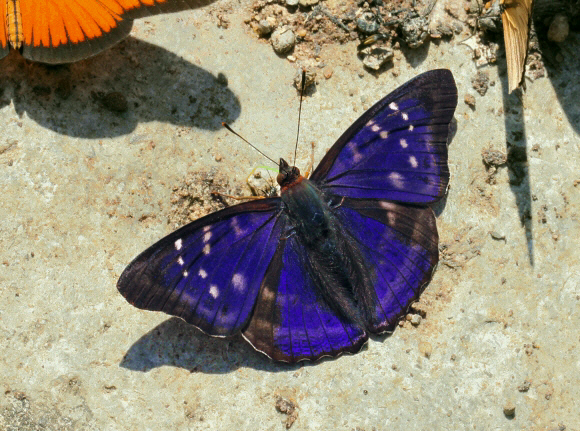
Introduction
There are 15 Doxocopa species. They can be loosely divided into 2 groups: The lavinia group have Adelpha-like bands across the wings. The wings of males reflect bright iridescent turquoise or purple hues. The zunilda group lack the Adelpha-like pattern. Their males have just a few small suffused whitish spots on the wings, which reflect an overall deep purple sheen.
The various species can be distinguished by differences in the configuration of the whitish spots. Females of this group are very different in appearance, with rounded wings, and patterns reminiscent of Perisama males.
Doxocopa zunilda is found from Panama to Paraguay and northern Argentina. The most well known subspecies is felderi, which is found in Panama, Colombia and Venezuela. The illustrated subspecies floris is restricted to eastern Peru.
Habitats
The butterfly breeds in rainforest habitats at altitudes between about 400-1600m.
Lifecycle
The caterpillar feeds on Celtis species (Ulmaceae). When fully grown it is green, strongly tapered towards the anal segment, and has a pair of forward-projecting horns on its head.
The chrysalis is probably similar to that of other Apaturines, which are typically flattened laterally, arched dorsally, and superbly camouflaged as living or dead foliage.
Adult behaviour
Males are often seen on sunny forest tracks, imbibing mineral-rich moisture from rocks, or feeding at carrion or fermenting fallen fruit. Females are much scarcer and rarely seen, as they spend their time high in the forest canopy.

